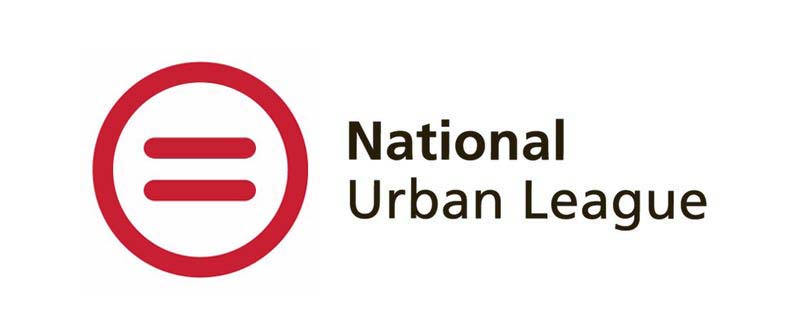First impressions matter, especially in the job search. Everything on your resume — including your font — plays an essential role in what kind of impression you make on the hiring manager. Unsure what the best font for your resume is? In this guide, we cover:
- What Are the Best Resume Fonts?
- What Is the Best Font Size for a Resume?
- What Are the Worst Resume Fonts?
- Can You Use Multiple Fonts on a Resume?
- How Much Does Your Resume Font Matter?
What Are the Best Resume Fonts?
The best resume fonts are professional, readable, and clear. You want the hiring manager to read your achievements, experience, and contact information without squinting or guessing what words are on the page.
It’s often better to choose a simple font so applicant tracking systems (ATS) can easily scan your resume and rank it based on how well it matches the job description. An ATS values legible and professional formatting rather than creativity.
There are two types of fonts you can use on a resume:
Serif Fonts
A serif is often called the “feet” of a font. It’s a small feature at the end of letters that makes them appear more decorative and ornamental. Major brands like The New York Times, JPMorgan, and McKinsey & Company use serif fonts for their logos.
Best serif fonts to use on a resume:
- Times New Roman
- Georgia
- Palatino
- Garamond
- Cambria
When Should You Use Serif Fonts?
Serif fonts are often considered more stylized and elegant. These are particularly effective if you’re applying for more of a creative role.
While ATS can pick up serif fonts, experts recommended using these fonts if you’re printing application materials.
“Their tiny details on the letters make it easier for the eye to recognize quickly on paper,” Chris Lewandowski, recruiter and president of Princess Dental Staffing, says.
Sans Serif Fonts
Sans serif fonts are considered clean, modern, and simple. They don’t have any “feet” or decorative elements to them. Brands like Bank of America, Chipotle, and Meta use serif fonts for their logos.
Best sans serif fonts for a resume:
- Arial
- Calibri
- Open Sans
- Tahoma
- Helvetica
- Roboto
- Verdana
When Should You Use Sans Serif Fonts?
Sans serif fonts are the best if you’re submitting a resume digitally, whether via email or directly to a company’s application site.
“Since most people are job hunting and processing their applications online, I highly suggest using sans-serif on digital resumes,” Lewandowski says. “This is because fonts such as Arial, Calibri, Tahoma, and Verdana, or those that don’t have intricate details on the letters, are much easier to read on computer screens.”

Forage Resume Writing Masterclass
Craft a winning resume with Forage's Resume Writing Class.
Avg. Time: 5 to 6 hours
Skills you’ll build: Resume writing, professional brand, professional summary, narrative, transferable skills, industry keywords, showcasing your impact, standing out
What Is the Best Font Size for a Resume?
The best font size is readable and allows you to fit all of your resume information efficiently. A resume generally shouldn’t be longer than two pages; ideally, it should be one page if you don’t have many years of career experience.
Best Size for Resume Job Descriptions
Generally, 12pt is the best size for descriptions, with no item on your resume less than 10pt.
“Keep in mind that some fonts are wider or taller than others, so it may be advisable to stick to larger than 10pt or smaller than 12pt, depending on which font you use,” Daniel Lorenzo, marketing director of resume writing service Let’s Eat, Grandma, says.
Best Size for Resume Headings
Headings can be in a larger font than your experience sections; however, they shouldn’t take up much more space on the page. The best size for section headings is 14-16pt.
Best Size for Your Name
Arguably, your name is one of the essential identifiers on your resume — which means it should visually stand out.
“Your name should be the largest text on the resume,” Lorenzo advises. “It can be 20pt or even a little higher (within reason, though — don’t waste space with a huge name).”
The same rules apply to font size as font choice: readability matters most.
“For the font size, you should always aim for an option that makes the content readable, no matter on which device the resume is read,” Felix T. Web, CEO and founder of Resume OK, says. “Most recruiters will use their work laptop to review resumes, but in rare cases some are checking applications from tablets or even mobile phones.”
What Are the Worst Resume Fonts?
Unfortunately, the best way to show your personality in a job application isn’t on your resume with fancy or creative fonts.
“Any unconventional or fancy font that you don’t typically see on documents is a bad idea, especially if it’s cursive or highly decorative like Lobster, Papyrus, or Impact,” Lorzeno explains. “You are not going to score any bonus points with your recruiter if your font is fun or fancy, and you will in fact lose their attention if it’s hard to read.”
You should try to stay away from using fonts with cursive, extra space between letters, or ones that look like handwriting.
Other fonts you can consider avoiding on your resume include:
- Comic Sans
- Futura
- Lucida Console
- Bradley Hand ITC
- Brush Script
Showcase new skills
Build the confidence and practical skills that employers are looking for with Forage’s free job simulations.
Can You Use Multiple Fonts on a Resume?
Yes! If you’re looking to make different resume elements stand out, using multiple fonts is OK. For example, you may use one font for your name and section headings and another for your experience descriptions. However, you should use no more than two different fonts.
If you use two fonts, be mindful about which fonts you choose. The fonts should pair well together.
“My go-to is a contemporary combination of Century Gothic for the name and the section headers, and Veranda for the body copy,” Lauren Hamer, CPRW and founder of Launch Point Resume, says. “Choosing two font types helps differentiate your resume format and organize your content in a new, more interesting way.”
How Much Does Your Resume Font Matter?
A font generally can’t make or break whether you get hired for a role (unless you use an illegible one). Yet your font choice affects how your resume appears to a hiring manager and how easily they can read it.
The golden rule is to pick a clear and readable font. While some might format better on your resume than others, what matters most is that a hiring manager can read your experience, accomplishments, and all other information that will show you’re the best person for the role.
“Don’t overthink your font,” Lorenzo advises. “Pick the option that most speaks to your personal brand from among the simple, common choices.”
The best resume font isn’t one that draws attention to your font choice. Instead, it’s the one that allows your accomplishments to stand out.
Do you have the perfect font in mind but still need to add some skills to your resume? Explore Forage’s virtual experience programs.
Image credit: Brooke Cagle / Unsplash


